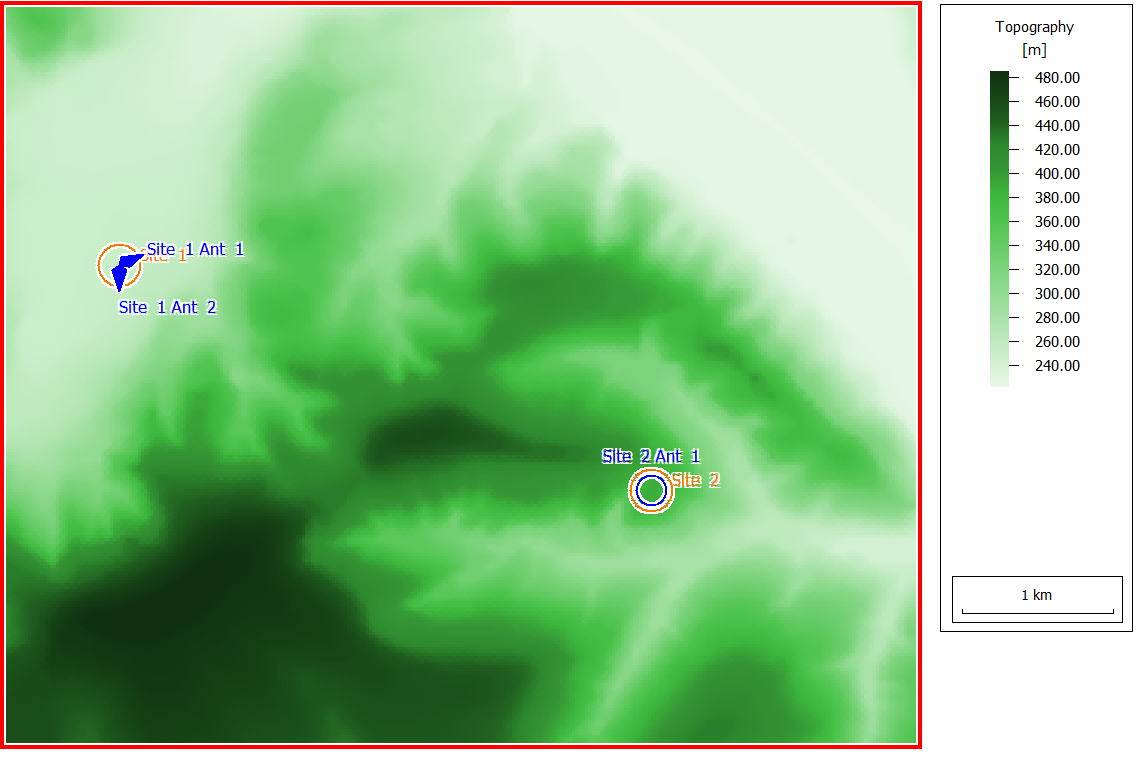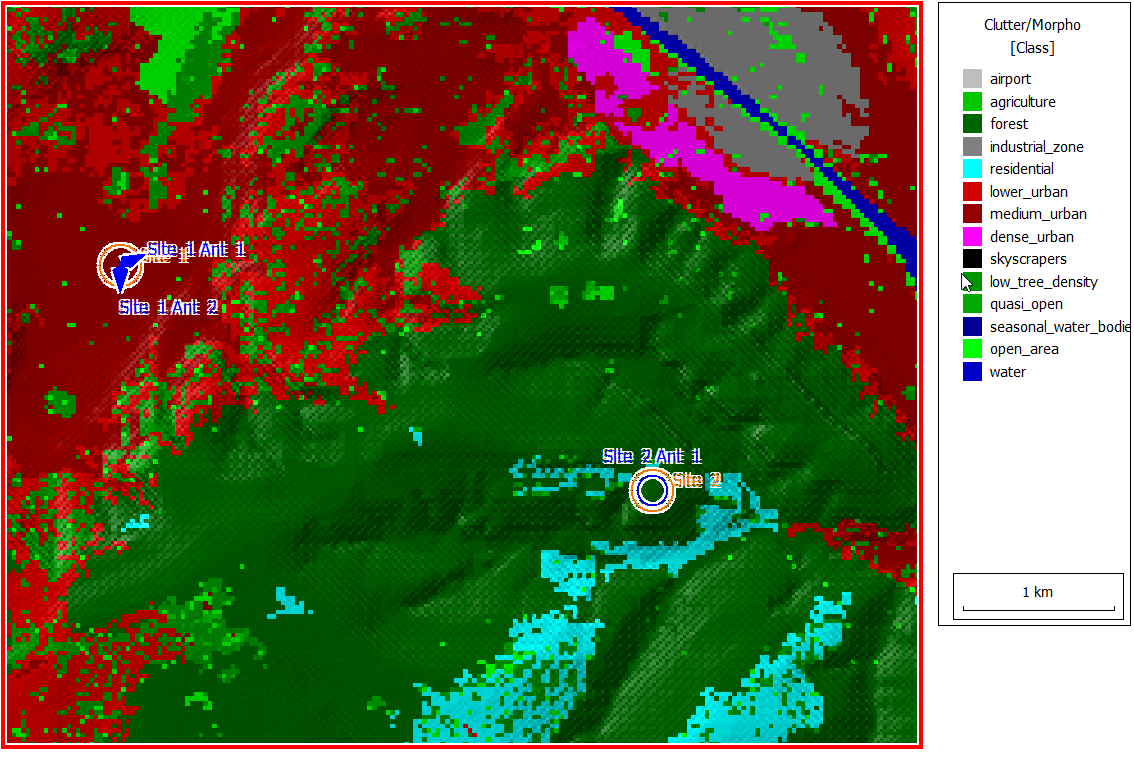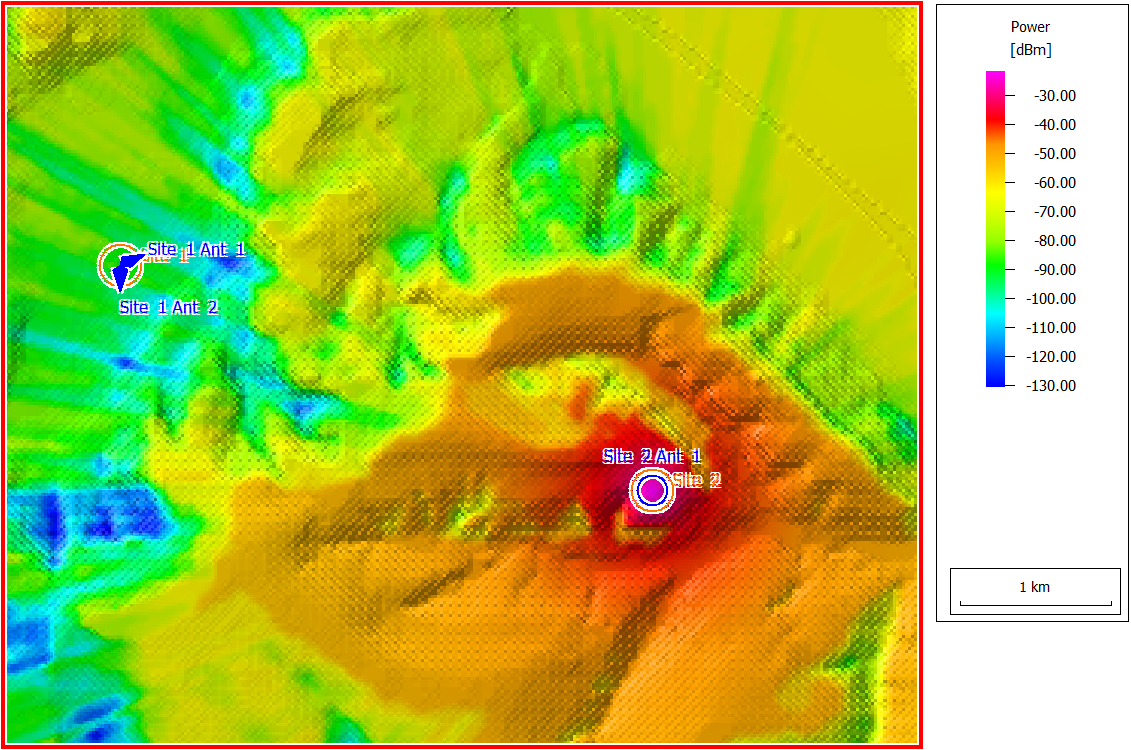Hilly Terrain, Two Ray Empirical
Calculate propagation in a hilly terrain using the empirical two-ray model (ETR).
Model Type

Figure 1. The topography for the rural/suburban scenario.

Figure 2. The clutter/morpho (land usage) for the rural/suburban scenario.
Sites and Antennas
Computational Method
The empirical two-ray model (ETR) model computes the path loss to each pixel based on the assumption that the direct ray and the ground-reflected ray exist. There is no check if the rays exist or if they are shadowed, whereas in the deterministic two ray model, rays are only considered if they are not shadowed.
Results
Results are computed for each transmitter on a prediction plane of 1.5 m. Propagation results include power coverage of each transmitting antenna, field strength, path loss, and line-of-sight results for both sites. Figure 3 shows an example of power coverage for Site 2 Antenna 1. The large dynamic range is obtained by the addition of knife-edge diffraction for shadow regions. The knife-edge diffraction ensures realistic results where no direct line of sight exists.

Figure 3. Power coverage of Site 1 Antenna 2. Note the large dynamic range. The option of additional Knife-Edge Diffraction ensures realistic results where no direct line of sight exists